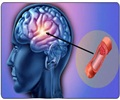In the majority of cases, it is advisable to allow patients' blood pressure to self-regulate following endovascular treatment.

Blood Pressure Management After Endovascular Therapy for Acute Ischemic Stroke
Go to source). The University of Cincinnati and UC Health’s Eva Mistry, MBBS, national principal investigator and lead author of the BEST-II trial, reported these findings in a study published in JAMA.
‘Adjusting blood pressure following clot removal should be personalized, as it may not always be a safe and universally effective approach. #lowerbloodpressure #bloodpressure #bloodpressuredrugs #stroke #bloodclot’





The study focused on patients who had undergone endovascular thrombectomy, a minimally invasive procedure for acute ischemic stroke patients that uses a catheter to remove a blood clot from a blood vessel in the brain, which restores blood flow. Enhancing Acute Stroke Treatment: Seeking Additional Strategies for Improved Outcomes
“Endovascular therapy has changed the landscape in acute stroke treatment,” said Mistry, assistant professor in the Department of Neurology and Rehabilitation medicine in UC’s College of Medicine and a UC Health physician at the UC Gardner Neuroscience Institute. “Patients do drastically better when they receive endovascular treatment, compared to when they don’t. But, despite the enormous effectiveness of endovascular treatment, about 50% of patients remain disabled or die at 90 days, so we are on a quest to understand if there are additional strategies that may further improve outcomes in these patients.”One of the main aspects of treating patients after a stroke is to monitor and control their blood pressure, Mistry said. Previous research has indicated that higher systolic blood pressure after endovascular treatment is associated with greater disability in people who have had an acute ischemic stroke.
Systolic blood pressure between 140 mm and 160 mm has been associated with better outcomes following the procedure. Normal blood pressure is considered as less than 120 mm systolic and less than 80 mm diastolic (bottom number in a blood pressure reading). However, whether using blood pressure medications to artificially lower systolic blood pressure to less than 180 mm is safe and effective has not been demonstrated following clot removal.
“There is always the concern if blood pressure is lowered too much in patients who are having an acute ischemic stroke that it could make the size of their stroke worse by reducing already compromised blood flow in that area,” Mistry explained.
Researchers led by Mistry enrolled 120 patients (with an average age of 70 years, 58% female) who had an acute ischemic stroke and successful endovascular treatment at one of three urban comprehensive stroke centers between January 2020 and March 2022.
Advertisement
Patients were treated with a blood pressure medication called nicardipine, administered intravenously, started within one hour after endovascular treatment and given for 24 hours if their systolic blood pressure was above the target they were assigned. Researchers wanted to assess whether lowering blood pressure may cause harm to brain tissue, which is particularly vulnerable during the 24 hours after a stroke, and to assess disability 90 days later.
Advertisement
“Although the study did not find a significant evidence of an unequivocal harm of lower blood pressure targets in this population in terms of worsening size of stroke or increasing disability, the trends indicated that there may only be marginal benefit of lowering post-endovascular treatment blood pressure on patients’ long-term disability," Mistry said. "In fact, there was indication that lowering the blood pressure after thrombectomy may worsen patients’ long-term disability.”
Individual patients may require the lowering of blood pressure due to specific conditions, but it should be customized and not used as a blanket practice, she said.
“There should be individual patient decision making, such as if there are other medical reasons to lowering the blood pressure or if there are signs of significant bleeding in the brain," Mistry said. “Health care professionals should be cautious when lowering blood pressure after endovascular treatment, as there are some signs that blood pressure that’s too low may be harmful,” Mistry said.
The study’s limitations include the small number of patients involved in the trial. Additionally, because the trial was conducted at three centers, the results may not apply to stroke patients treated elsewhere.
Reference:
- Blood Pressure Management After Endovascular Therapy for Acute Ischemic Stroke - (https://jamanetwork.com/journals/jama/article-abstract/2808995)
Source-Eurekalert















